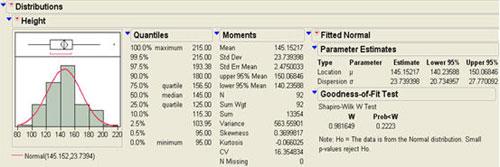

Knowing how yours handles dummy coding or missing data is imperative to doing correct statistics. The defaults and assumptions and wording are not the same across packages. There are many great books, online tutorials, and workshops for learning all the major stats packages.īut I also recommend you choose one as your primary package and learn it really, really well. But if you can, it will save you grief later on. I know, it’s hard enough to find the time to start over and learn one. And when you’re trying to learn a new, highly complicated statistical method is not the time to learn a new, highly complicated stats package.įor these reasons, I recommend that everyone who plans to do research for the foreseeable future learn two packages. Even so, the gaps are in the most complicated analyses–some mixed models, gee, complex sampling, etc. There is huge overlap, to be sure, and the major ones are much more comprehensive than they were even 5 years ago.
#Jmp vs minitab software#
– In case you decide to outwit the powers-that-be in IT who control the site licenses and buy your own (or use R, which is free), no software package does every type of analysis. But when a new stats professor decided to use JMP instead of Minitab, guess what happened to the Minitab site license? Unless you’re sure you’ll never leave your current university, you may have to start over. When I was at Cornell, they offered site licenses for 5 packages.
#Jmp vs minitab license#
– Many schools offer only a site license for only one package, and it may not be the one you’re used to. I’m not sure if they stopped producing or updating it, but my university cancelled their site license. – My favorite stat package for a while was BMDP. This will come in handy for a number of reasons If you have the self discipline to do it, I suggest learning two software packages at the beginning.

So once you’re learned one, it will be easier to learn the next one.Ģ. There are many similarities in the logic and wording they use even if the interface is different. The first one you learn is the hardest to learn. I think I’ve used at least a dozen different statistics packages since my first stats class. Many times the stat package used in a class is chosen for its shallow learning curve, not its ability to handle advanced analyses that are encountered in research. The default is to use whatever software they used in your statistics class–at least you know the basics.Īnd this might turn out pretty well, but chances are it will fail you at some point. In addition to the five listed in this title, there are quite a few other options, so how do you choose which statistical software to use?


 0 kommentar(er)
0 kommentar(er)
